Category:
SoftLINK Version 15.10 – New Test Designer
December 24th, 2023 by adminNew update to the Test Designer
Discover the brand new user interface, which replaces the toolbar and menus with an intuitive ribbon, making it even easier to create tests. To help you create each question type, use the new-style wizard which guides you through the process with ease.
Image shows types of questions available
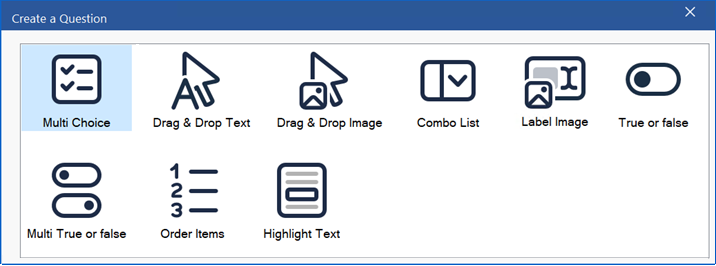
Plus, helping to ensure there are no mistakes in your questions, we’ve added a spell checker with configurable regions. When creating questions, you can also create another question of the same type, keeping some of the same settings – making it even quicker to create variations of tests.
Image shows a ‘Label Image’ question type
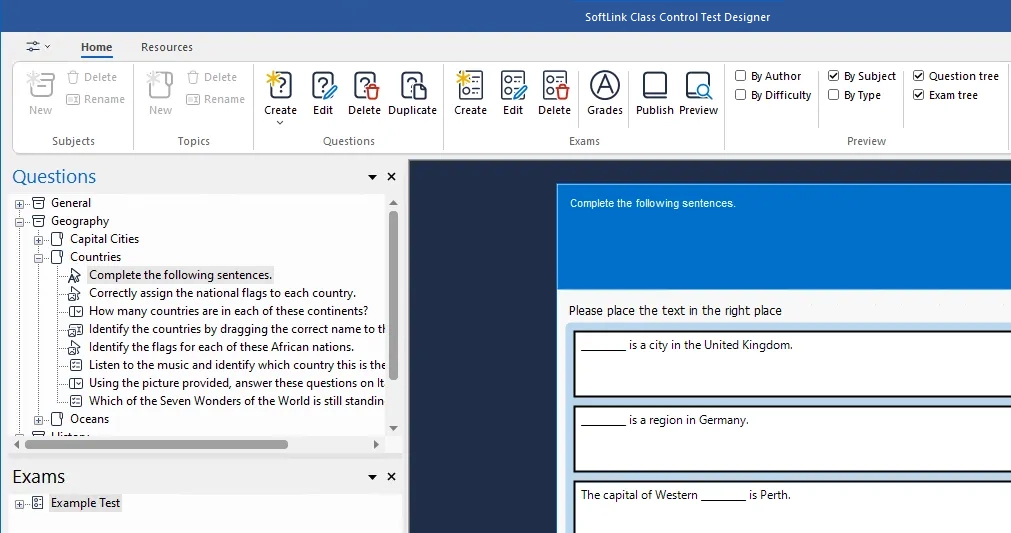
To save time, if a topic or subject is selected in the tree view and you create a question, this is automatically applied to the new question, and once a question is created, it’s automatically selected in the Questions pane tree view.
Image shows a test in progress
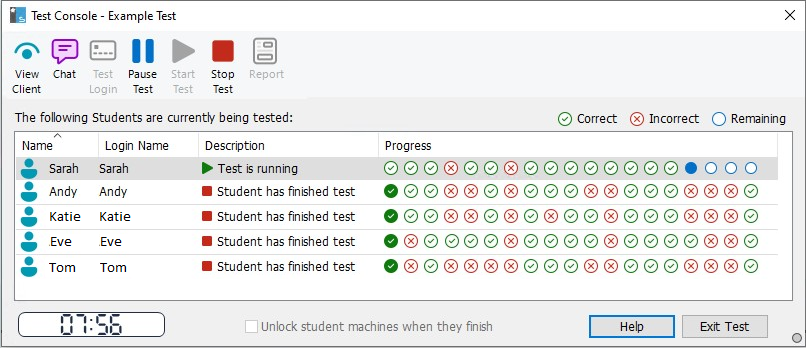
V15.01 – Update
New features
- MP4 video format is now available in show video. It requires MP4 codec to be available in wmplayer.
- New support for Arabic language.
Please note this is for Windows only – other platform support for these features will follow soon.
V15 – macOS
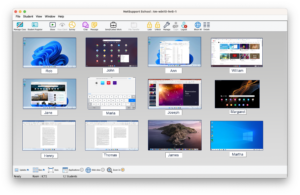
New features
- The toolbar icons have been updated to reveal a fresh look and feel.
- The macOS Tutor can now pull down SIS information from the Connectivity Server to start classes.
- A Classwizard is now available to create and store multiple lists of classes. From the Classwizard, teachers can select multiple rooms to connect to – perfect if students are spread across several classrooms.
SoftLINK Version 15 – OUT NOW!
August 2nd, 2023 by adminUser interface
A brand-new user interface makes it even easier to find and use all of SoftLINK’s classroom management features. Co-produced directly with instructors, its intuitive layout in a ribbon bar format at the top makes completing tasks quicker without getting buried in extra unnecessary steps.

- Turn off additional confirmations when powering off/restarting or logging out of devices
- New ‘right click’ options to access features even quicker, plus a Delete option has been added to remove student icons on the teacher and tech console.
- Display PC name and logged-on username are both displayed on the icon when in ‘large icon mode’ making it easier to identify each student
- Show the logon name (rather than display name) in the student icons/thumbnails
- Add “Launch” to the tutor toolbar when in the reduced Chrome Mode
- Use keywords to block/approve access to all websites
- Configure the Tutor default start-up mode via the Tutor
- Use custom layouts in User Mode
- Customize the options on the minimized Tutor Toolbar.
- When a new update is available for SoftLINK, a notification will pop-up to notify you of any new features or updates that are available.
Keep Trainees on Task
In addition to already being able to blank all students’ screens, now, when a teacher is viewing one individual device (View mode), they can blank that screen so the student can’t see what the teacher is doing – available on Windows 10/11 (v 2004+).
If a student is running multiple monitors, icons are now displayed on the student thumbnail, allowing the teacher to switch between each monitor or view the whole desktop – handy for ensuring students are fully on task.
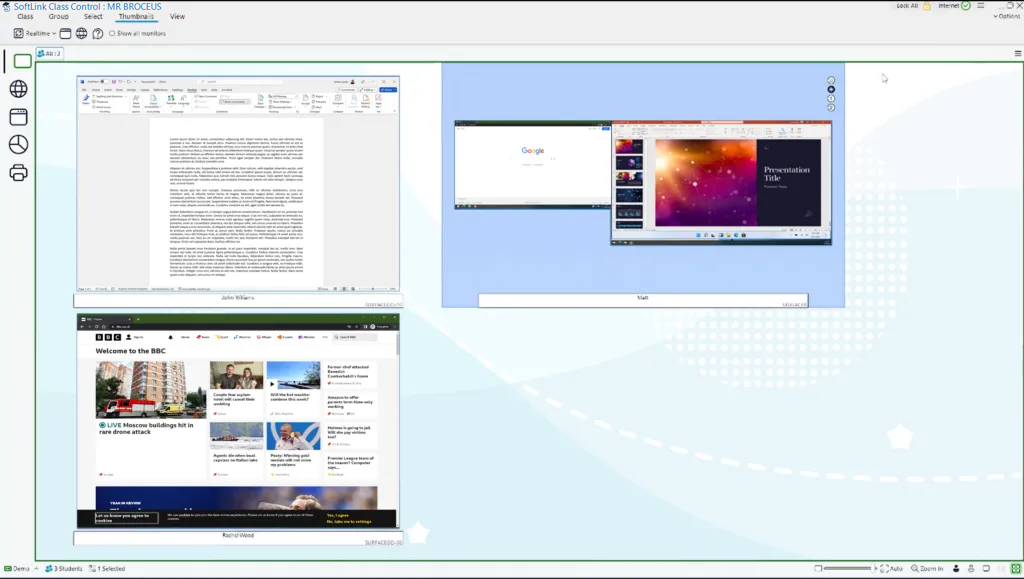
As well as launching a website or application, now you can also launch an associated file such as a PowerPoint or Word document – handy for getting the entire class working on the right document at the same time.
In the student toolbar, you can also hide an approved website in the list displayed on students’ screens.
The whiteboard can now be resized to fit the student’s screen, making it easier for the teacher and student to view and collaborate.
Within Feedback mode, more icons have been added for students to select, helping them to better represent their wellbeing/topic understanding.
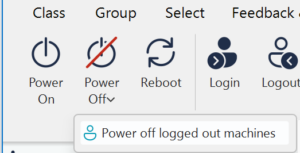
Reduce energy costs
In addition to power on/off and log in/log out all classroom computers, teachers can also power off student PCs that are not logged on – perfect to help reduce costs on unused devices.
Connectivity Server
A list of servers known to the Connectivity Server is now displayed, allowing you to see at a glance how many students are connected, and any active sessions. A filter bar also allows you to search for students in the Connectivity Server Console.
In addition to displaying the client name, IP address, MAC address and Gateway key, the Gateway console now displays the description of the gateway key in use under the Clients section.
The Connectivity Server console window can now also be resized to make it easier to view.
Test and assess
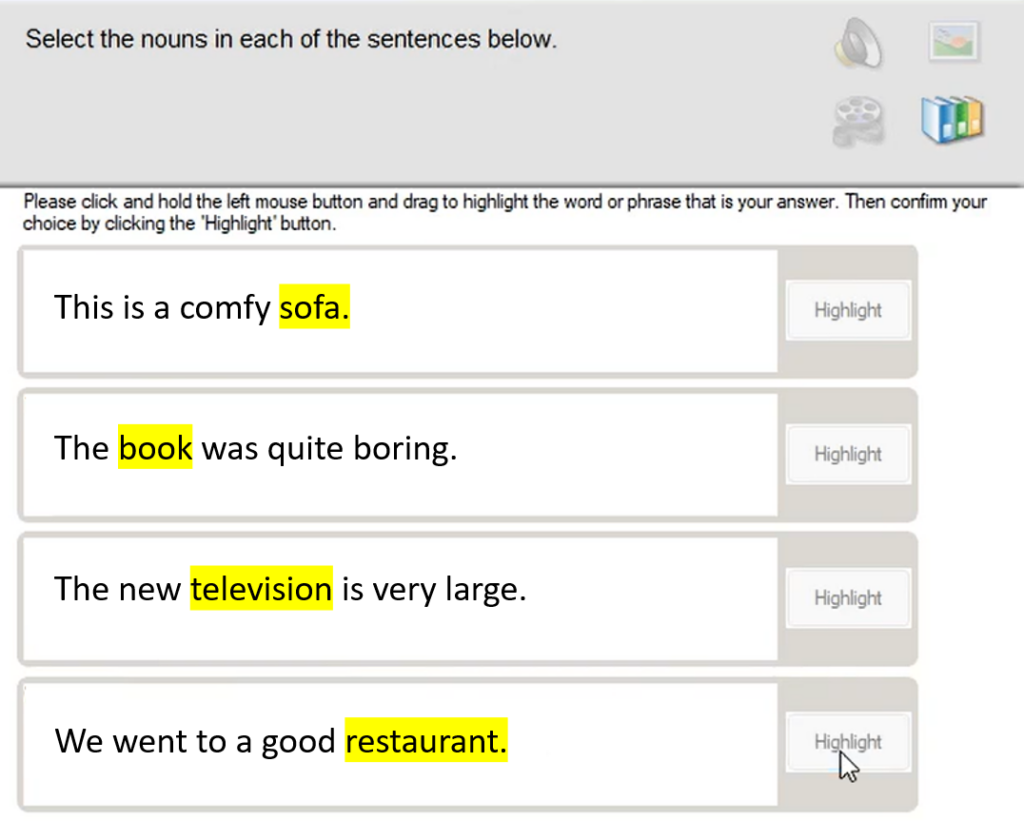
In SoftLINK’s Testing tool, PNG images can now be added into the test, and a new question has been added, called ‘Highlight text’. Teachers can create a question and highlight the correct text in a statement.
The student must highlight the correct section of text to qualify as a correct answer – useful for providing more challenging ways to assess students’ understanding.
Two fake (incorrect) answers can also be added to the drag-and-drop question type, so students have to identify the correct answer before dragging it into the statement.

Plus, if there are any connection issues, you can recover in-progress test results. Teachers can also reward students with new animated stickers that will appear on the student’s toolbar. These can also be added to the student journal.
Distribute and collect work
In addition to sending files to students, you can now send folders/subfolders from the teacher to the student. Plus, in the File Transfer tool, you can also collect files from students and enable the student to choose which file to upload to the teacher (without needing to send them a file first).
To make access easier, in the tree view in the File Transfer and File Distribution windows, you can access the downloads folder to directly transfer files quickly and easily. In addition, folders that need to be accessed regularly can be added to a ‘Favorites’ folder in the Tree view.
Manage students and connections
From the Classwizard, teachers can select multiple rooms to connect to – perfect if students are spread across several classrooms. An updated reboot command can now be sent to all machines which ensures they reboot whatever their logged in/off state.
When in User Mode, you can use the ‘refresh list’ to re-connect to a student who has logged off/on or re-booted, plus any late joiners can now join a ‘Show’ that is already in progress by the teacher – preventing lost teaching time in getting that student up to speed.
In the student register, you can now save the Registration Report as a PDF file.
When a teacher sends a message to students, messages displayed that include any URLs are now clickable, making it even easier for teachers to point students in the right direction. Plus, all chat sessions between the teacher and student are automatically logged and stored – perfect for supporting evidencing requirements.
A viewable web url is also now available in students’ web history, making it handy for reviewing sites and their content.
Updated Tech Console
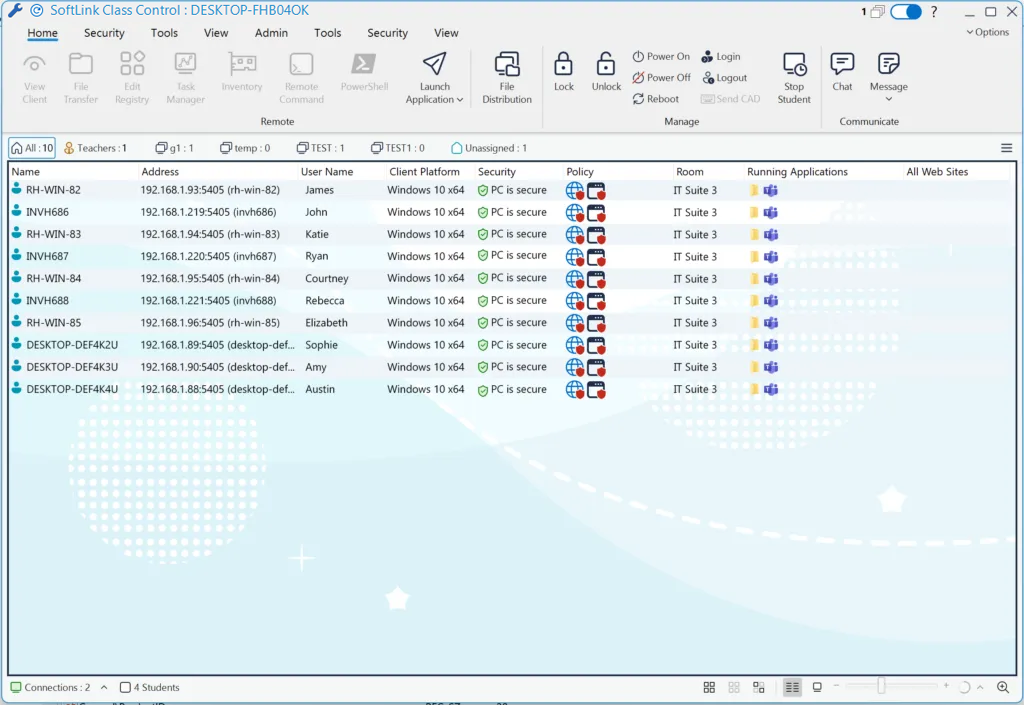
The Technicians’ Console now features a new user interface and uses a ribbon bar to make it even easier to find and use all of SoftLINK’s features. It includes a new ‘quick search’ function to help IT teams find students and teachers by user name, machine name, IP address, running application or website, for example – making it even quicker to provide support.
Further enhancements include the ability to stop the Client32 service from running, and being able to end the connection from a teacher’s console. In the reports section, the client version number is included, making it easier to see what version of SoftLINK is running on students’ PCs.
Expanded support for Android is also included, allowing you to connect to Android devices using the Tech Console.
Additional Group policy options
Even more Tutor Console Settings are now available to configure via a group policy.
CHROME STUDENT – V2
The latest update to SoftLINK’s Student Chrome Extension provides new features and enhancements to further support schools in monitoring and managing students’ Chromebooks – plus, deliver instruction with ease!
Enhanced Thumbnail View: Teachers (using Windows) can view all activity on the students’ devices within the thumbnail view – not just the activity taking place in the open browser window.
Student View: In addition to viewing student activity via the thumbnail view, teachers can now open a separate view session to discreetly monitor the student’s screen and take a closer look at activity – perfect for ensuring students are on task with their learning activities. (Windows only).
To view all the features available for Chrome, please click here.
SoftLINK Version 14
January 28th, 2020 by adminStudent Feedback Mode
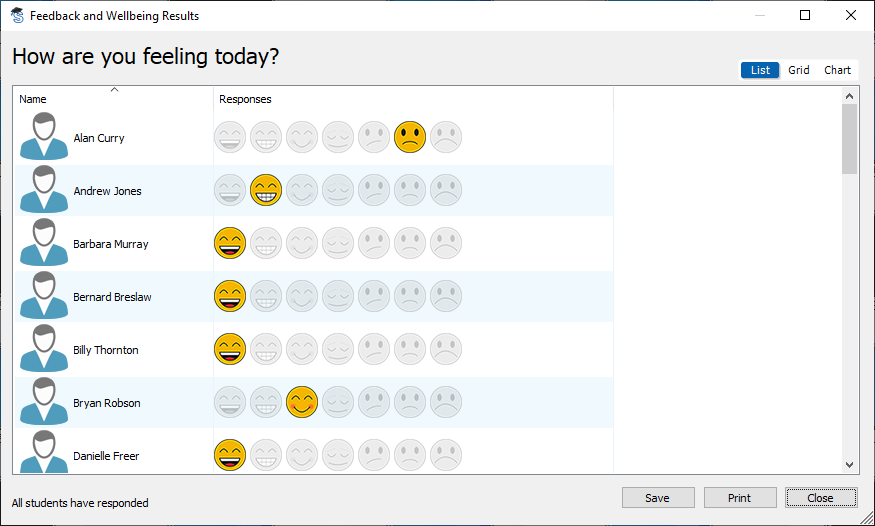
SoftLINK’s new Student Feedback Mode provides educators a great way to capture how their students feel. A teacher can quickly gauge their students’ confidence on a topic. This helps the teacher to decide if they can move onto the next topic or if they need to spend additional time on the current topic. Ultimately, this will help the teacher increase their class’s overall comprehension.
SoftLINK provides several different styles of visual indicators to choose from. Once the desired option is selected, a dialog box appears and allows the teacher to enter the question they want to pose to the class. The questions, along with the visual option chosen, will appear on the students’ workstations. The students can then make their selection from the options provided to them.

The results from the student feedback are reported back to the SoftLINK Tutor in two formats. The first, the list style report, displays each individual student’s feedback and allows the teacher to see each student’s mood/understanding response. The chart view provides a holistic view of the responses, giving the teacher a general mood/understanding of the entire class.
Easy mode
It is essential the money schools invest in EdTech be spent wisely. It is just as important to ensure the educational technology purchased is fully utilized in the classroom. With this in mind, Applied Computer Systems, Inc. has restructured SoftLINK to make it even more intuitive and user-friendly, regardless of the end-user’s technical experience. SoftLINK now boasts three separate Tutor Console modes; Easy, Intermediate, and Advanced. Each mode provides the core functionality that teachers require yet allows the teacher to customize their interface based on their SoftLINK knowledge and comfort level. The new “Easy” mode provides technology-shy staff the core SoftLINK functionality needed in the classroom while providing it in a simplistic manner.
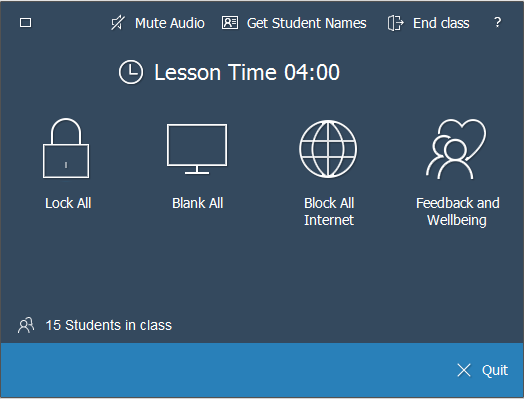
“Easy” mode tools include:
- Lock/Unlock
- Blank screens
- Power on pcs
- Message students
- Student Feedback
- Block all internet
- Help requests
- ‘Mute Audio’ at student.
- Lesson Timer
The “Intermediate” mode (previously “basic” mode) offers even more levels of control to the teacher. The “Advanced” mode provides all SoftLINK’s features and functionality, allowing teachers with more SoftLINK experience the ability to use the product to its fullest potential.
SoftLINK Version 12.65
August 28th, 2019 by adminIntegration with Google Classroom
SoftLINK now integrates with G Suite for Education. Teachers can connect to their students’ devices using the class lists composed in Google Classroom. This feature is available to customers that are running the SoftLINK Windows Tutor and the SoftLINK Name & Connectivity Server (NCS). The Google Classroom integration offers more flexibility when setting up their technology-led lessons and helps teachers save time. Read our Installation Guide for more information.
SoftLINK for macOS
SoftLINK for macOS (previously Assist) now sports a completely new user interface. The enhanced interface provides teachers an easier method for identifying and navigating features. In addition, teachers now have the flexibility to connect, via their Mac, to a wide range of student devices, regardless of their operating systems. The supported student platforms include macOS, Chrome OS, Windows, iOS and Android. SoftLINK continues to support cross-platform capabilities, as a Windows Tutor can still connect to a Mac student as well.
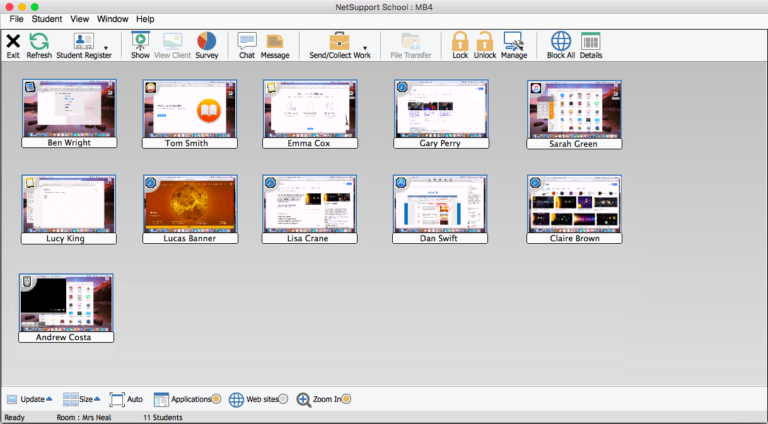
Key Mac features include:
- Monitor the entire class or individual students via a thumbnail view
- Show or broadcast the teacher’s screen to all or a selected group of students
- Chat and send messages to the class or selected students
- Monitor and control application and internet use
- Conduct quick surveys to gauge student comprehension
- Distribute and automatically collect files from each student
- Plus many more!
SoftLINK for macOS provides 64-bit support allowing support for the latest macOS releases and devices, as well as older versions of macOS.
The macOS agent can be remotely deployed on macOS clients, saving valuable time by circumventing the manual installation process.
*The SoftLINK Name & Connectivity Server (NCS) musted be installed and running to establish a connection between the teacher’s device and Chrome students. Read our Installation Guide for more information.
SoftLINK Version 12.60
June 25th, 2019 by adminSIS Integration
SoftLINK now supports integration with SIS (Student Information System) environments via ClassLink OneRoster (Windows and Chrome Tutor only). Once synced, the SoftLINK Tutor can be configured to identify, at an individual school level, the SIS data (teacher, lesson and required students) relevant to the teacher’s current lesson. This new feature help teachers to save time when setting up their technology-led lessons and also it offers more flexibility when connecting to student devices.

SoftLINK Version 12.50
February 1st, 2018 by adminRefreshed User Interface
SoftLINK now features a completely refreshed user interface to make it even easier to identify and navigate to features. Users can also switch between a basic and advanced toolbar – which makes it more accessible to new teachers.

Reset System Passwords
One of the most common issues for IT technicians is students forgetting their passwords. Now, teachers can take on the role of resetting network passwords via their task bar, allowing the students quicker access to their devices and ensuring that lesson disruption is kept to a minimum.
New PowerShell Feature
A PowerShell window can now be launched from the console to quickly and easily execute PowerShell commands at a selected Windows Client.
New Deployment Enhancements
SoftLINK Deploy now offers a more intuitive interface for locating and deploying to machines and allows you to quickly locate machines local to the Tutor.
Improved Performance
Teachers can maximize lesson time even further with enhanced file transfer and distribution speeds.
Disable Webcams
Webcams on classroom devices can now be disabled, which not only helps support a school’s eSafety policy but also helps to maintain students’ focus during lessons.
SoftLINK Version 12
August 4th, 2015 by adminWindows 10 Support
SoftLINK now fully supports the Windows 10 operating system for both the Tutor and Student. In addition, support for the Microsoft Edge browser has been added as well as tablet mode.
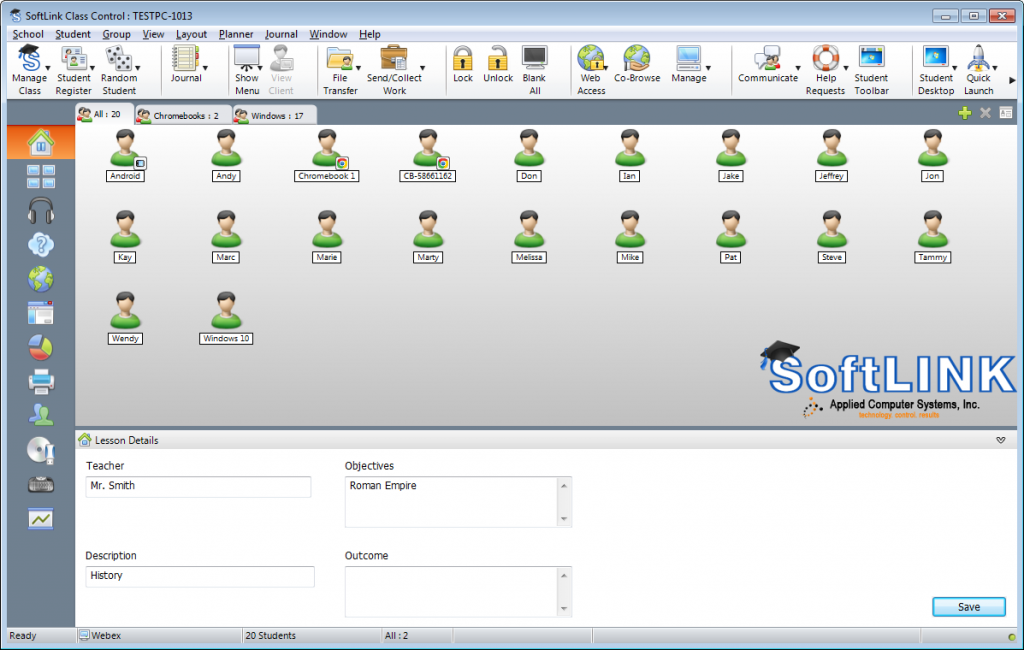
Applied Computer Systems, Inc. is aware that more devices are becoming ‘touch’ devices. In response to the growing presence of these devices we have also updated the SoftLINK student dialogs to be more touch friendly.
The SoftLINK Student toolbar has also been updated, providing a new fresh look to the user interface.
SoftLINK Version 11.41
January 21st, 2014 by adminOptimized Network Performance (IP Multicast)
In some environments, network activity can be reduced by utilizing multicast rather than broadcast technology, where data is only sent to devices explicitly requesting it. To ensure suitability on all environments, SoftLINK now offers support for both broadcast and multicast modes.
File Transfer
The latest version of SoftLINK features live folders. When initiating a file transfer to a remote PC, the path to any open folders (Explorer windows) on either the Tutor or Student’s desktop are displayed at the top of the file transfer view window to ease quick selection.
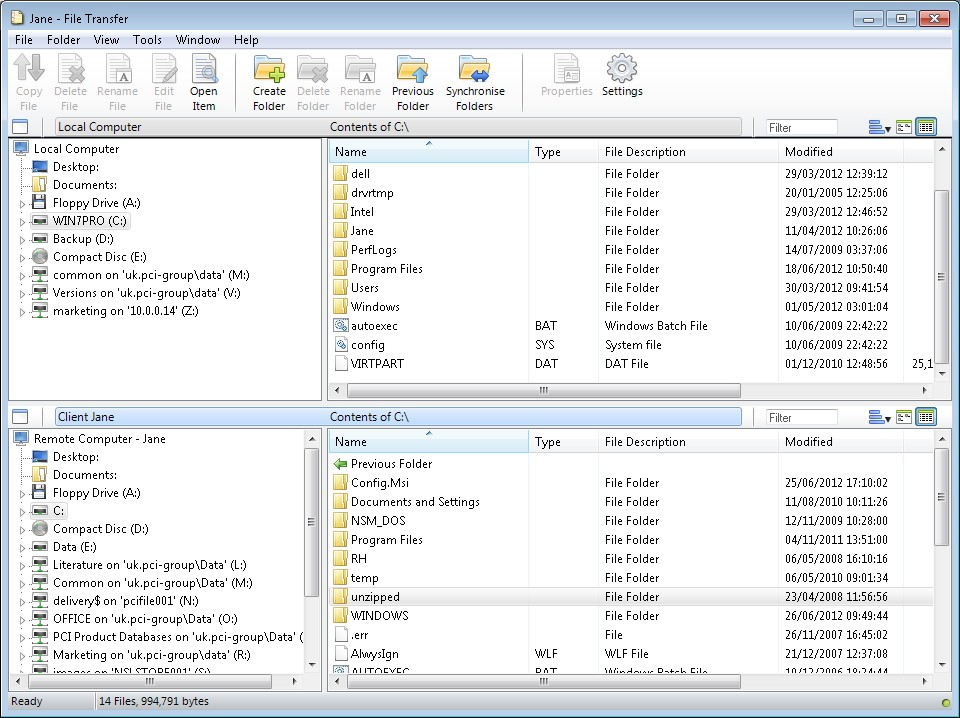
Tutor for Google Chrome
The new Tutor for Chrome extends the product’s multi-platform support by enabling teachers in a dedicated Chrome OS classroom to interact with student Chromebooks from their own Chrome OS-enabled system. The School Student app extension for Google Chrome needs to be installed on each student Chromebook.
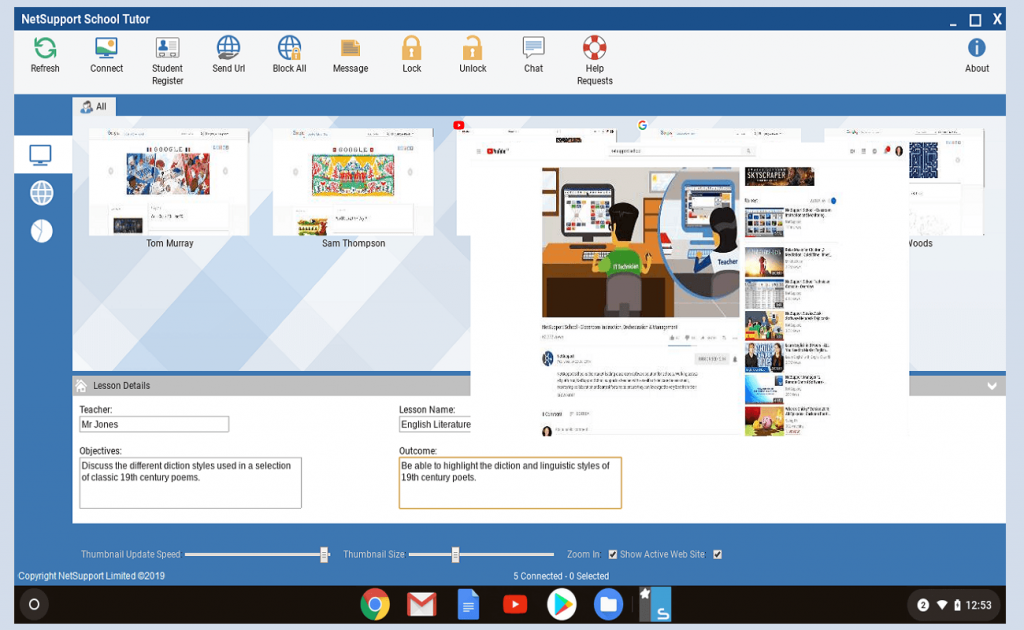
Key Features when connecting to students from a teacher’s Chrome OS device:
- View a crystal clear thumbnail of each student machine in a single view.
- Zoom in to view a larger thumbnail of any selected student Chromebook.
- The teacher can set objectives and expected outcomes for the current lesson.
- Ask students to register at the start of each lesson.
- Lock the student’s mouse and keyboard when instructing.
- Send an instant survey or request for feedback to each student and display results in real time.
- The teacher can open a discussion session that all or selected students can join, enter their comments and share with the rest of the class.
- Send an attention-grabbing message or instruction to each student machine.
- Request Help facility – students can send a request for help to the teacher.
- Block unauthorized websites.
- Use approved websites only.
- Block all Internet access.
- Launch a website on the student Chromebook.
- Block FTP Access.
- See details of the website that students are currently viewing.
In mixed platform classrooms, the SoftLINK Windows Tutor application can also connect to student Chromebooks.
Student for iOS
The latest version extends SoftLINK’s ability to support your BYOD (Bring Your Own Device) initiatives and the growing use of mobile technology in the modern classroom with the launch of its new Student app for Apple iOS devices.
The Student for iOS ensures students using these devices can still join with your SoftLINK-managed lessons.
Key features when connecting to students using iOS devices:
- Student Register: The teacher can request standard and/or custom information from each student at the start of each class and create a detailed register from the information provided.
- Connecting to Students: The teacher can either browse for students (from their desktop application) or allow students to connect directly to the relevant class from their device.
- Lesson Objectives: If provided by the teacher, once connected, students are presented with details of the current lesson, together with overall objectives and their expected learning outcomes.
- Sending Messages: The teacher can broadcast messages to one, selected, or all devices. Students receive an audible and visual alert when a message is received and they can then be viewed and managed by the student.
- Chat: Both the student and the teacher can initiate a Chat session and participate in group discussions.
- Requesting Help: Students can discreetly alert the teacher when they require assistance. This sends an alert to the teacher’s desktop, enabling them to interact with the student concerned. In addition, a red toolbar appears at the top of the student’s screen, enabling the teacher to easily identify students in need of help as they move around the classroom.
- Class Surveys: As part of student and classroom assessment, teachers can conduct on-the-fly surveys to gauge student knowledge and understanding. Students are able to respond in real time to the survey questions posed and the teacher can then show results to the whole class, enabling students to receive instant feedback on their progress.
- Show Screen: While presenting, the teacher can show their desktop to connected devices, at which point students are able to use touch-screen gestures to pinch, pan and zoom in order to highlight key information when needed.
- Battery Status: View the current battery strength for each connected student device.
- Configuration Options: Teachers can choose to pre-configure each device with the required classroom connectivity settings, or ‘push’ the settings out to each device from within the SoftLINK Tutor program.
SoftLINK Student for Android v2
The latest version enables teachers to:
- Remotely launch a selected website on one or multiple student tablets.
- Remotely assign ‘rewards’ to students to recognise good work or behaviour.
- Blank student screens to gain attention.
- View the current wireless battery strength status for each connected student.
Additionally, for supported devices:
- View thumbnails of all connected student tablets from the Tutor PC.
- Zoom in to view a larger thumbnail of any selected student tablet.
SoftLINK Version 11.30
June 21st, 2013 by adminSoftLINK for Android
Available to download from Google Play, the new SoftLINK Student for Android meets the challenges presented by the increased use of mobile technology in the modern classroom.
For use in your existing SoftLINK-managed classroom environment, once installed on your students’ Android tablets, teachers can interact with and support students from the traditional desktop Tutor application.
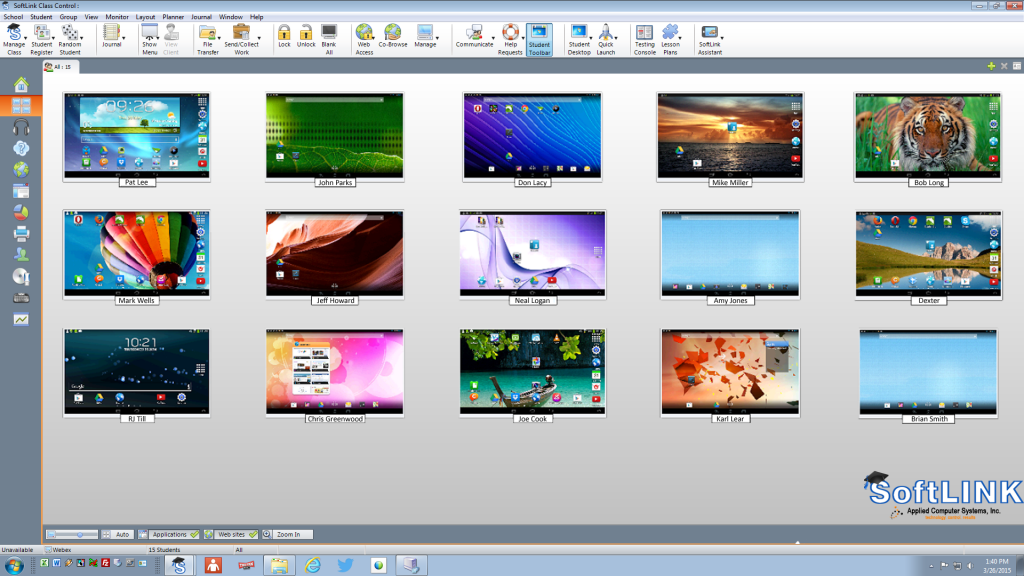
Key features when connecting to students using Android tablets:
- Student Register: The teacher can request standard and/or custom information from each student at the start of each class and create a detailed register from the information provided.
- Connecting to Students: The teacher can either browse for student tablets (from their desktop application) or allow students to connect directly to the relevant class from their Android device.
- Lesson Objectives: If provided by the teacher, once connected, students are presented with details of the current lesson, together with overall objectives and their expected learning outcomes.
- Sending Messages: The teacher can broadcast messages to one, selected, or all tablet devices. Students receive an audible and visual alert when a message is received and they can then be viewed and managed by the student.
- Chat: Both the student and the teacher can initiate a Chat session and participate in group discussions.
- Requesting Help: Students can discreetly alert the teacher when they require assistance. This sends an alert to the teacher’s desktop, enabling them to interact with the student concerned. In addition, a red toolbar appears at the top of the student’s tablet, enabling the teacher to easily identify students in need of help as they move around the classroom.
- Class Surveys: As part of student and classroom assessment, teachers can conduct on-the-fly surveys to gauge student knowledge and understanding. Students are able to respond in real-time to the survey questions posed and the teacher can then show results to the whole class, enabling students to receive instant feedback on their progress.
- Lock Screen: The teacher can lock students’ screens while presenting, ensuring student focus when required.
- Show Screen: While presenting, the teacher can show their desktop to connected tablets, at which point students are able to use touch-screen gestures to pinch, pan and zoom in order to highlight key information when needed.
- Configuration Options: Teachers can choose to pre-configure each Android tablet with the required classroom connectivity settings, or ‘push’ the settings out to each device from within the SoftLINK Tutor program.
Extended Google Chrome OS Support
- Chat: The teacher can open a discussion session with selected or all students, enter their comments and share with the rest of the class.
- Performance: Enhanced ‘Show’ response time.
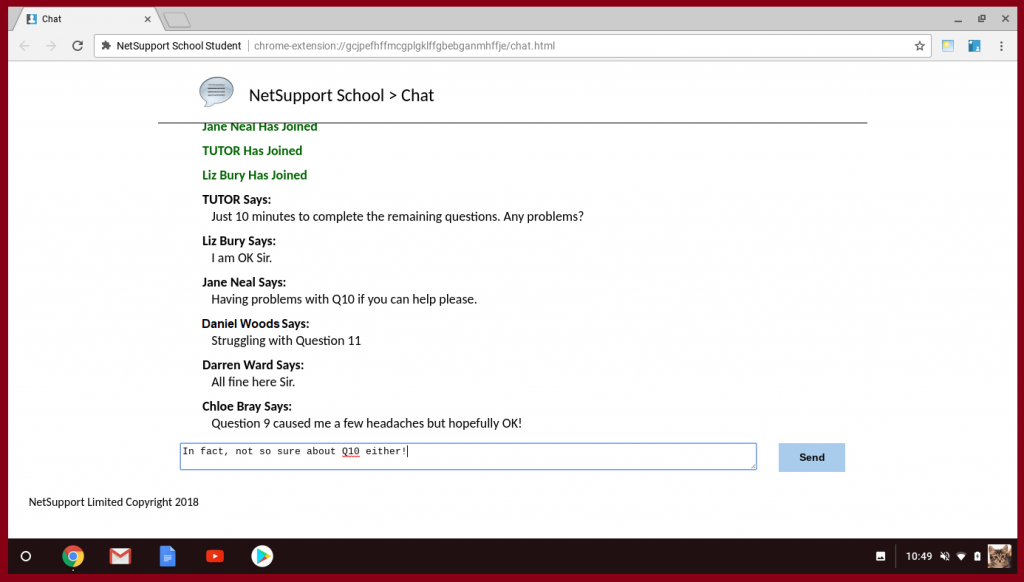
SoftLINK Version 11.20
April 16th, 2013 by adminEnhanced Windows 8 Support
Adding to SoftLINK’s existing Windows 8 desktop support, teachers and technicians now have the capability to interact with and control student machines that are running the Windows 8 Metro interface:
Internet Control
- Allow access to approved websites only.
- Block all internet access or limit to those on a restricted list.
- Use the SafeSearch feature to prevent inappropriate content being returned within search results.
- Block FTP access.
Application Control
- Only allow approved applications to run.
- Prevent restricted applications from running.
- Monitor the use of open applications.
- Change the currently viewed application.
- Close applications, with the option to save work, on selected student systems in a single action.
- Force applications to close without prompts.
- Launch an application at student machines.
Quick Launch / Desktop Controls
Introduced in SoftLINK Version 11, the ‘Quick Launch’ option lets teachers remotely launch applications, specific documents or websites on selected or all student computers in an instant. The feature now includes support for Windows 8 Metro apps.
The ‘Student Desktop’ controls now include the option to switch between the Windows 8 desktop and Metro interfaces.
Technician’s Console
Now allows Windows 8 Store Metro apps and web pages viewed on Windows 8 Metro browsers to be included in your ‘always-on’ restrictions.
Optimizing SoftLINK for use in a wireless environment
SoftLINK uses advanced techniques to limit the effects of an unreliable wireless network. In this latest version, we have added multiple configuration options that will help you reduce the amount of data being sent across your network – resulting in improved performance.
Extended Google Chrome OS Support
The latest version extends SoftLINK’s support for students using Google Chromebooks:
- Show the teacher’s screen. Ensure student attention and focus when presenting by ‘showing’ the teacher’s desktop to selected student screens.
- Perform a show to students in a browser tab, or in full screen mode.
- Multi-monitor support. If the teacher is using multiple monitors, select an individual screen to show to students or show all.
- Show an application to selected students.
- Remote Control. As well as discreetly monitoring student screens (Watch Mode), teachers can now interact with the students’ desktops with real-time remote control (Share Mode). Ideal for providing 1:1 help and support to students as needed.